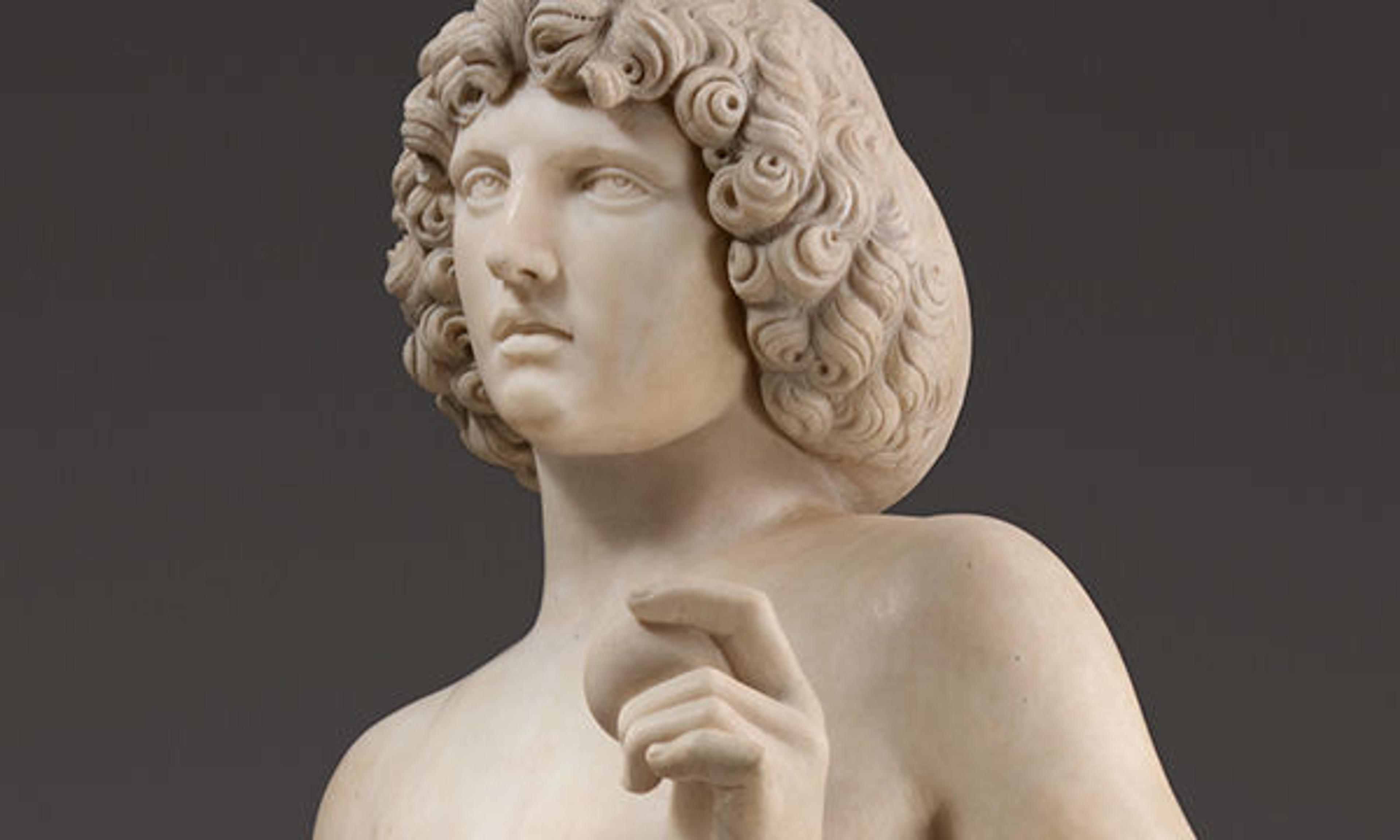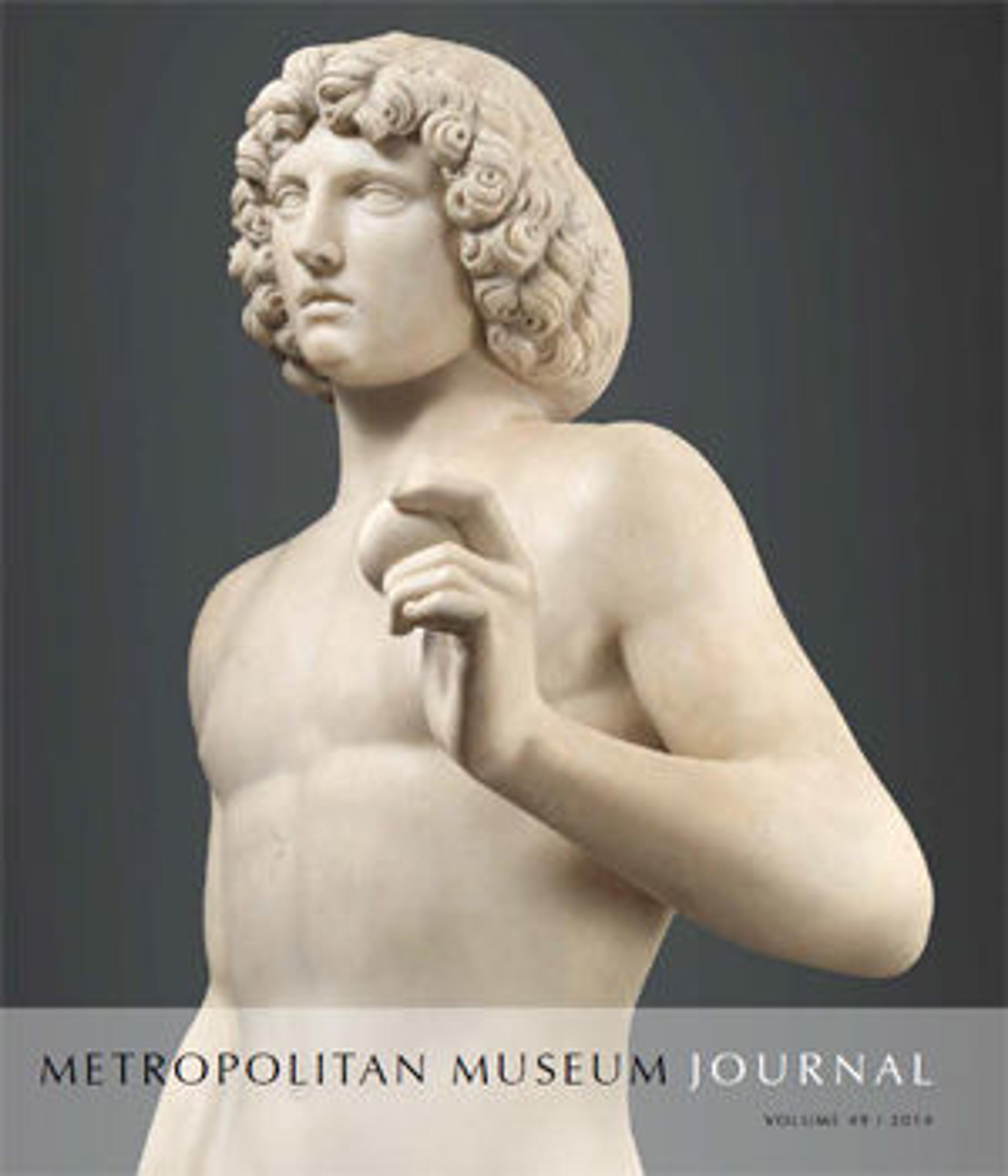
Tullio Lombardo (Italian, ca. 1455–1532). Adam (detail), ca. 1490–95. Italian, Venice. Marble. The Metropolitan Museum of Art, New York, Fletcher Fund, 1936 (36.163)
«This Wednesday, April 8, Met Curator Luke Syson will give a talk, entitled Behind the Fig Leaf, about Tullio Lombardo's Adam (ca.1490–95)—the Renaissance marble of "The First Man" and one of the most important pieces of Venetian sculpture held outside of that city. After a terrible accident that left him in pieces and the painstaking restoration of the artwork, Adam is now on display in Tullio Lombardo's Adam: A Masterpiece Restored, on view through July 2015. Located in a specially designed space, gallery 504, the exhibition also features captivating video footage of the conservators at work during this extensive restoration project.»
Left: Adam undergoing conservation. Photo by Carolyn Riccardelli

As the Iris and B. Gerald Cantor Chairman of the Department of European Sculpture and Decorative Arts, Luke Syson is the authority on European art and sculpture in the Met's glorious collection, in addition to being an incredibly dynamic and entertaining speaker. (His TEDxMet talk, held at the Museum in the fall of 2013, has nearly one million views!) Behind the Fig Leaf will take us further into the exploration of this multifaceted piece of art and how Renaissance sculptors so skillfully and delicately incorporated narratives within their work. As the title of this talk suggests, there is one feature that, if we're not attentive, we might take for granted: Adam's fig leaf. Here Syson will reflect upon the origins and meaning of the fig leaf—a concealment that actually draws attention to itself.
While looking ahead to this talk, I thought it would be fun to share some of the fascinating information, expertise, and research on Tullio Lombardo's Adam currently available on the Met's website. Met Museum Presents loves to engage with the collection through a variety of mediums, so here are some free resources to whet the appetite:
MetMedia
The First Man: Tullio Lombardo's Adam
In this video, Syson delves into perspective and how Adam is meant to be viewed. While it's very tempting, he says, to look at this sculpture from the front and straight on, it is actually meant to be observed slightly to the right. The hint is in the signature and inscription at the base of Adam.
Viewpoints: Body Language
Adam
In Viewpoints, an interpretive project that invites you to explore sculptures of the human body through multiple viewpoints, in the galleries and online, Syson and fellow curator Peter Bell offer concise insights on the body language and sculptural subtleties of this stunning work. Just how beautiful should Adam be? Divine, yes, but also human. Tullio Lombardo's interpretation is considered.
MetPublications
"Adam by Tullio Lombardo": Metropolitan Museum Journal, Vol. 49 (2014)
Written for the display and restoration of Adam by Syson and Valeria Cafá—assistant curator at the Museo Correr in Venice—this very extensive study of the sculpture includes historical context as well as the scholarly examination of the exquisite technique of Lombardo and the significance of Adam's pose.

Download this publication as a PDF.
To purchase tickets to Behind the Fig Leaf, or any other Met Museum Presents event, visit www.metmuseum.org/tickets; call 212-570-3949; or stop by the Great Hall Box Office, open Monday–Saturday, 11:00 a.m.–3:30 p.m.